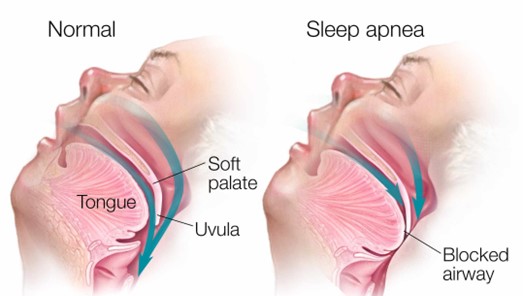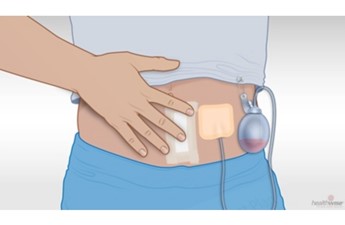A client with obstructive sleep apnea (OSA) ambulates in the hallway with the nurse prior to bedtime and then returns to bed. Which intervention is most important for the nurse to implement before leaving the client?
Apply the client's positive airway pressure device.
Elevate the head of the bed to a 45 degree angle.
Remove dentures or other oral appliances.
Lift and lock the side rails in place.
The Correct Answer is A
Choice B reason: Elevating the head of the bed to a 45-degree angle is not a sufficient intervention for the nurse to implement before leaving the client. Elevating the head of the bed can help reduce snoring and improve breathing by preventing the tongue and soft palate from falling back and obstructing the airway. However, it may not be enough to prevent apnea episodes in clients with obstructive sleep apnea, especially if they have other risk factors such as obesity, enlarged tonsils, or nasal congestion. The nurse should also use other interventions such as a positive airway pressure device, weight loss, or surgery.
Choice C reason: Removing dentures or other oral appliances is not a relevant intervention for the nurse to implement before leaving the client. Dentures or other oral appliances are devices that replace missing teeth or improve dental alignment. They may help improve speech, chewing, and appearance, but they do not have a direct impact on obstructive sleep apnea. The nurse should instruct the client to remove dentures or other oral appliances before going to bed to prevent discomfort, infection, or damage.
Choice D reason: Lifting and locking the side rails in place is not a necessary intervention for the nurse to implement before leaving the client. Side rails are bars that attach to the sides of the bed frame to prevent falls or injuries. They may provide safety and security for some clients, but they may also pose risks such as entrapment, strangulation, or agitation. The nurse should assess the need for side rails on an individual basis and consider alternative measures such as bed alarms, low beds, or floor mats.

Nursing Test Bank
Naxlex Comprehensive Predictor Exams
Related Questions
Correct Answer is C
Explanation
Choice C is correct because observing the incision site of a client who was discharged home with a suprapubic catheter can help detect signs of infection, bleeding, or healing problems. The nurse should inspect the incision site for redness, swelling, drainage, or odor and report any abnormal findings.
Choice A is incorrect because measuring abdominal girth of a client who was discharged home with a suprapubic catheter is not necessary unless there are signs of urinary retention or obstruction. The nurse should monitor the urine output and color and report any changes.
Choice B is incorrect because assessing perineal area of a client who was discharged home with a suprapubic catheter is not necessary unless there are signs of infection or irritation. The nurse should instruct the client on how to keep the perineal area clean and dry and report any discomfort or discharge.
Choice D is incorrect because palpating flank area of a client who was discharged home with a suprapubic catheter is not necessary unless there are signs of urinary tract infection or kidney involvement. The nurse should ask the client about any pain or tenderness in the flank area and report any positive findings.

Correct Answer is D
Explanation
Choice A: Mark an outline of the 'olive-shaped' mass in the right epigastric area. This is not a priority action, as it does not address the immediate needs of the infant. The 'olive-shaped' mass is a sign of pyloric stenosis, but it does not affect the infant's hydration or nutrition.
Choice B: Instruct parents regarding care of the incisional area. This is an important action, but not a priority before surgery. The parents need to know how to care for the incisional area after surgery, but this can be done later.
Choice C: Monitor amount of intake and infant's response to feedings. This is a relevant action, but not a priority before surgery. The infant with pyloric stenosis may have vomiting, dehydration, and electrolyte imbalance due to gastric outlet obstruction. Monitoring intake and output can help assess the severity of these problems, but it does not correct them.
Choice D: Initiate a continuous infusion of IV fluids per prescription. This is the priority action before surgery, as it can prevent or treat dehydration and electrolyte imbalance in the infant. IV fluids can also help maintain blood volume and perfusion during surgery.
Whether you are a student looking to ace your exams or a practicing nurse seeking to enhance your expertise , our nursing education contents will empower you with the confidence and competence to make a difference in the lives of patients and become a respected leader in the healthcare field.
Visit Naxlex, invest in your future and unlock endless possibilities with our unparalleled nursing education contents today
Report Wrong Answer on the Current Question
Do you disagree with the answer? If yes, what is your expected answer? Explain.
Kindly be descriptive with the issue you are facing.
